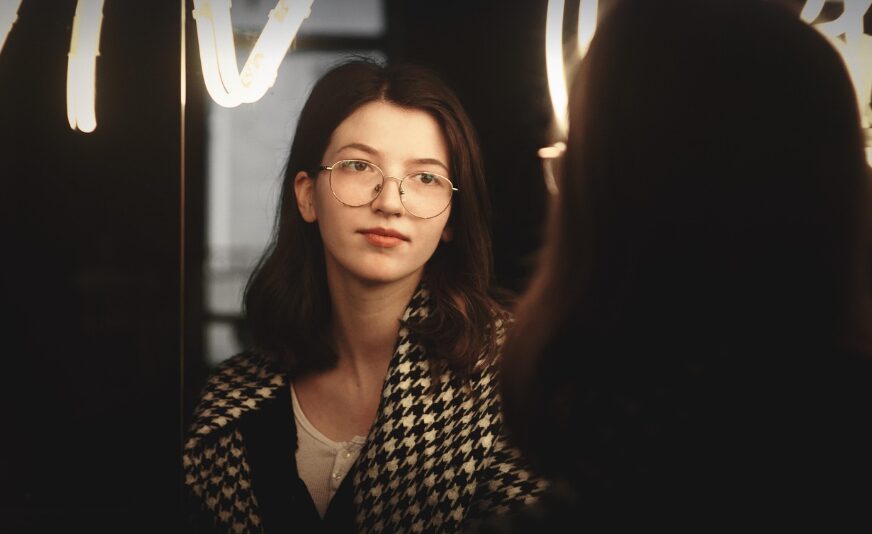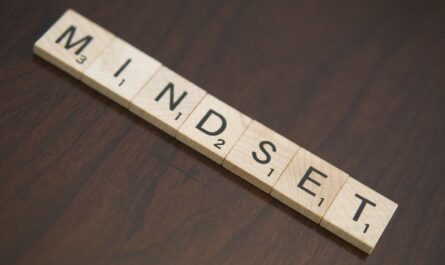In a world awash with media images and instant social sharing, the concept of beauty has always loomed large. For decades, mainstream ideals centered on specific looks—often Eurocentric, impossibly thin, or meticulously symmetrical—that left many feeling excluded or pressured to conform. Yet in recent years, a profound cultural shift has begun to reshape beauty standards across industries, social networks, and personal mindsets. Instead of demanding that individuals fit a single mold, influential voices—ranging from social media activists to forward-thinking brands—have championed the celebration of authenticity and unique features. This change reflects not only a more inclusive attitude toward physical traits, but also a deeper recognition that genuine confidence and well-being radiate from embracing one’s natural self.
This article explores how historical notions of beauty evolved to this pivotal moment in which authenticity reigns. We’ll delve into the forces fueling the new embrace of unconventional looks, highlight inspiring role models reshaping the narrative, and examine the personal and societal benefits of recognizing beauty in all its forms. Ultimately, the shift toward celebrating authenticity and unique features speaks to a broader cultural awakening that values diversity, self-acceptance, and the richness of human variety.
1. A Brief Look at Beauty Standards Across Eras
1.1 Historical Precedents and Cultural Variations
Beauty standards have never been static; they’ve shifted in tandem with cultural, economic, and political changes. In ancient times, plump bodies were associated with prosperity in some regions, while others lauded athletic physiques. During the Renaissance in Europe, fuller figures and pale complexions signified social status. In various African and Asian communities, specific adornments—neck rings, lip plates, facial scarification—carried distinct aesthetic and cultural significance.
By the 20th century, globalization and mass media homogenized certain ideals: slender bodies, fair complexions, symmetrical facial features. Hollywood’s Golden Age popularized the blonde bombshell archetype, while fashion magazines revered tall, thin, often Caucasian models. Even within diverse cultures, colorism and Eurocentric preferences took root, sidelining people with darker skin or non-Eurocentric features.
1.2 The Rise of Mass Media and the Narrowing of Beauty
The advent of television, glossy magazines, and advertising in the post-World War II era saw the consolidation of a narrow beauty standard. Marketers pushed products aligned with an “ideal” look—diet fads, chemical hair straighteners, skin lighteners, etc. This reinforced messages that physical perfection was both attainable and mandatory. Those outside the prescribed norms felt marginalized or inadequate, sparking issues from low self-esteem to harmful body practices.
However, seeds of resistance were planted. Body positivity movements, civil rights activism, and second-wave feminism contested oppressive norms and demanded representation for more diverse looks. Though incremental, these efforts set the stage for the contemporary transformation we see today.
2. Key Catalysts for the Shift Toward Authenticity
2.1 Social Media’s Power to Democratize
Arguably the greatest disruptor of modern beauty ideals has been social media. Platforms like Instagram, TikTok, and YouTube allowed individuals to bypass traditional gatekeepers—agencies, editors, brand executives—and present their looks, stories, and talents directly to global audiences. Suddenly, self-expression wasn’t reliant on meeting a magazine editor’s aesthetic preferences.
- Body Positive Influencers: Curvy women, those with visible disabilities, trans individuals, and people of color used hashtags and viral content to showcase their beauty on their own terms. Hashtags like #bodypositivity, #loveyourself, or #acnepositivity encouraged openness about real bodies, “imperfections,” and honest journeys.
- Direct Community Engagement: Instead of top-down messaging, feedback loops formed where audiences applauded authenticity, which emboldened creators to share more. Over time, large followings validated that beauty extends well beyond a homogenous “look.”
2.2 Consumer Demand for Representation
As social media micro-influencers gained traction, it became clear that consumers were hungry for diverse representation. They called out brands for tokenism or for using a single plus-size or darker-skinned model as a “diversity sprinkle.” Consumer boycotts or viral critiques forced industries to adapt.
- Inclusive Campaigns: Mainstream brands responded with campaigns featuring plus-size, disabled, transgender, or older models, acknowledging wide-ranging demographics. Rihanna’s Fenty Beauty famously launched with 40 foundation shades, setting a new standard in inclusivity.
- Market Research: Data revealed that underrepresented groups had significant purchasing power. Brands ignoring or sidelining them risked not only moral backlash but also financial losses.
2.3 Celebrity and Influencer Advocacy
High-profile figures from supermodels to pop stars used their platforms to champion body positivity and authenticity.
- Diverse Models Breaking Barriers: Models like Winnie Harlow (with vitiligo) or Adwoa Aboah (proudly owning her freckles) gained prominence, celebrating unique features that had once been deemed unmarketable by mainstream fashion.
- Pop Culture Heroes: Celebrities like Lizzo, with her unwavering confidence in a plus-size body, or Billie Eilish, challenging body-shaming narratives by wearing loose clothing, illustrated that stardom can be attained—and used to transform norms—regardless of conventional “body perfect” ideals.
3. Embracing Unique Features: A Closer Look
3.1 Skin Conditions and Marks
Where society once urged covering scars, stretch marks, freckles, and vitiligo, there’s now a growing celebration of these “flaws” as beautiful markings of individuality. Social campaigns encourage people not to hide birthmarks or moles. Instead, individuals share personal journeys embracing them as part of their identity.
Cosmetic brands have released limited-edition makeup lines that showcase, rather than conceal, freckles. Vitiligo positivity accounts flourish online, offering styling tips and emotional support. This normalizes a spectrum of skin appearances rather than a single polished aesthetic.
3.2 Hair Textures and Colors
Centuries of hair straightening or relaxing in communities of color reflected attempts to align with mainstream norms. As natural hair movements gained steam, curly, coily, kinky, or big Afro styles found acceptance and even high-fashion representation.
Simultaneously, vibrant hair colors—pink, blue, grey, or pastels—have shed their subcultural niche and become widely appreciated forms of self-expression. Instead of policing “work-appropriate” hair, progressive workplaces now value personal style choices.
3.3 Body Shapes and Sizes
From body acceptance hashtags to plus-size models on high-end runways, the shift towards acknowledging every body’s beauty is radical. While mainstream fashion still has strides to make, progress is evident: extended sizing lines, mannequins with diverse shapes, and collaboration lines specifically for plus-size or petite consumers show real (if sometimes slow) transformation.
Simultaneously, fitness discourse evolves away from “thin = healthy” dogma to highlight strength, functionality, and mental well-being. Influencers celebrate postpartum bodies, highlight cellulite, and emphasize wellness over crash diets.
3.4 Physical Disabilities and Limb Differences
Adaptive fashion and inclusive modeling highlight that individuals with prosthetic limbs or wheelchairs can be equally (and absolutely) beautiful. Leading magazines have featured models with limb differences on covers, while runway shows incorporate mobility aids as part of the styling. This shift acknowledges that disability is a normal part of human variation, not something to hide or fix.
4. Psychological Impacts of Redefining Beauty
4.1 Improved Self-Esteem and Mental Health
When media mirrors the diversity of real people, viewers are less likely to compare themselves harshly against a single unattainable standard. This fosters self-acceptance. People no longer believe they have to transform themselves drastically—through cosmetic surgery, unhealthy dieting, or excessive bleaching—to find validation or success.
4.2 Decreased Stigmatization
Skin conditions, body differences, or even chronic illnesses once shrouded in shame gain normalization when they appear in mainstream media. As representation surges, stigma recedes. For instance, widespread acceptance of vitiligo in modeling challenges the idea that uneven pigmentation is “unattractive” or “unprofessional.” This acceptance filters into everyday life, fostering empathy and reducing bullying.
4.3 Healthy Media Consumption
People are gravitating towards influencers and content that promote body neutrality or positivity, responsible self-care, and mental well-being. This shift counters a history of airbrushed perfection that triggered body dysmorphia or disordered eating. Now, a feed that features raw moments—acne, unedited angles, diverse bodies—encourages a healthier self-image and deeper empathy for varied experiences.
5. Industry Transformations
5.1 The Rise of Inclusive Beauty Brands
Brands like Glossier, Rare Beauty, Fenty Beauty, and The Lip Bar have built reputations for wide shade ranges and gender-neutral marketing. They invest in visual campaigns that star real customers or micro-influencers, capturing an authentic vibe. This breaks from the hyper-retouched glam images of older beauty giants, forging deeper emotional connections with consumers.
5.2 Fashion’s Gradual Progress
High-profile runway events are seeing more models of color, older models, plus-size representation, and models with disabilities—albeit still sporadically. Bodies once deemed “niche” appear in mainstream contexts, from lingerie catwalks to couture editorials. Though systemic biases persist, each inclusive booking sends ripples that nudge designers and casting directors to think more broadly.
5.3 Television and Film Representation
While Hollywood historically favored symmetrical faces, fair complexions, and thin frames, streaming platforms and global content expansions have diversified the visual tapestry. International hits—like South Korean dramas featuring monolid eyes or African series spotlighting coily hair—garner global fandom. This normalizes varied features and fosters cross-cultural appreciation for different looks.
6. Navigating Commercial Pressures and Ethical Concerns
6.1 Potential Pitfalls of “Diversity Washing”
As inclusivity gains traction, some brands co-opt the trend for publicity without genuinely reforming practices or wholeheartedly supporting underrepresented communities. They may feature a token “unconventional” model in a single campaign but revert to narrow ideals otherwise.
Consumers increasingly spot and call out “diversity washing,” pressuring businesses to adopt consistent, meaningful representation—ranging from boardroom hires to equitable marketing budgets. Authentic engagement is key to maintaining trust.
6.2 Body Positivity vs. Body Neutrality
While body positivity emphasizes loving one’s body no matter what, body neutrality is emerging as an alternative that values acceptance without forcing relentless self-love. Some critics argue positivity can be co-opted by marketing, leading to slogans absent of structural change. True progress may involve acknowledging normal fluctuations in self-image—some days you feel confident, others less so—and decoupling appearance from worth.
6.3 The Role of Technology and Filters
Social media often pits #nofilter authenticity against advanced editing apps that can digitally alter facial features or bodies. Face-tuning technology can ironically perpetuate unrealistic ideals. Balancing creative expression with ethical guidelines remains tricky. Some influencers advocate disclaimers when using filters, urging honesty about illusions created by editing tools.
7. Personal Journeys to Celebrate Authenticity
7.1 Cultivating Self-Compassion
Embracing authenticity typically starts within. Individuals often undergo a healing process—letting go of shame about “flaws” and learning to see them as unique strengths. Practices like journaling, therapy, or daily affirmations encourage gentle acceptance.
Setting boundaries around media consumption also helps. Curating social feeds, unfollowing triggers, and seeking supportive communities all create an environment that fosters self-confidence rather than undermining it.
7.2 Celebrating Incremental Wins
Real transformation in beauty norms doesn’t happen overnight. Small steps—wearing a tank top despite arm insecurities, going foundation-free to highlight freckles, or styling natural hair proudly—build resilience and solidarity. Sharing these breakthroughs on social channels can inspire others to do the same.
7.3 Championing Others’ Uniqueness
An important facet of the new beauty ethos is actively complimenting and encouraging others’ features. A positive comment about a friend’s natural hair or a colleague’s distinct style extends the message of inclusivity. This fosters a ripple effect, as people become more open to praising individuality instead of gravitating to one standard.
8. Broader Cultural Implications and the Way Forward
8.1 Cultural Cross-Pollination
In an interconnected world, celebrating authenticity resonates across borders. Elements that were once specific to subcultures or ethnic groups—for instance, henna patterns, indigenous hairstyles, or tribal piercings—appear in mainstream settings. The critical question is whether this is done with respect and context or through appropriation. Responsible appreciation involves acknowledging cultural roots, crediting artistry, and avoiding tokenization.
8.2 Evolving Professional Environments
Workplace dress codes and grooming policies have begun loosening. Employers realize that forcing conformity—like banning dreadlocks or restricting natural hairstyles—alienates valuable talent. LinkedIn’s open environment, or progressive corporate handbooks, exemplify workplaces that champion individuality. This shift fosters inclusive environments where employees feel respected and can shine without hiding their identities.
8.3 Intersectional Dimensions of Beauty
The new beauty landscape also highlights how gender, race, age, ability, and sexuality intersect. A woman of color with albinism, an older transgender man with a disability—each dimension interacts with beauty norms differently. Comprehensive acceptance means acknowledging the complex interplay of these identities and uplifting those at multiple intersections.
Conclusion: A Movement Beyond Aesthetics
The celebration of authenticity and unique features is far more than a fleeting trend in cosmetics or fashion. It’s a cultural realignment that speaks to human diversity, dignity, and the universal longing for acceptance on our own terms. By challenging restrictive standards and uplifting people who radiate confidence in their so-called “imperfections,” society broadens its definition of beauty to encompass far more than superficial traits.
Social media opened the floodgates for real people to broadcast their truths—stretch marks, scars, wide hips, thick thighs, curly hair, pale lashes, monolids, vitiligo, wheelchairs, prosthetics, transitions—and find fellowship across digital spaces. Brands, spurred by changing consumer attitudes, have progressively expanded representation, though the journey is far from done. The new face of beauty acknowledges that self-worth isn’t dictated by ephemeral fads or rigid ideals, but by the courage to own one’s story.
Moving forward, it’s essential to remain vigilant: the momentum can only be sustained if we keep scrutinizing media for regressive patterns, championing lesser-heard voices, and practicing empathy. Embracing authenticity is, at its core, a recognition of our shared humanity. The real glow-up arises from individuals and communities learning that differences are the vibrant threads that make the human tapestry so enthralling—and that each thread deserves its own spotlight.



